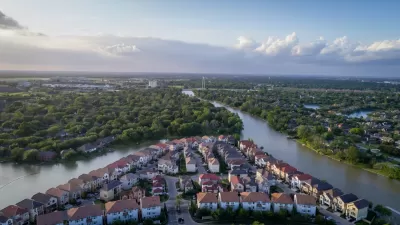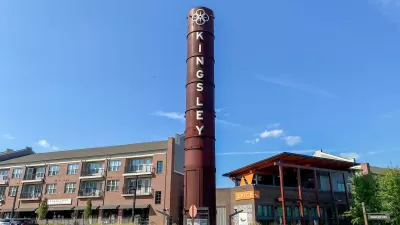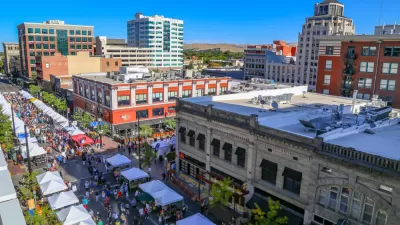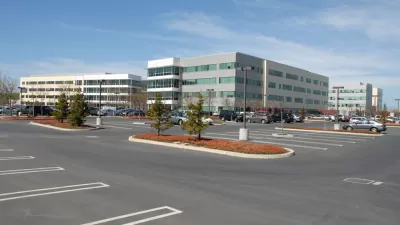Developers in Fort Bend County are drawing inspiration from ‘agrihoods’ to build car-light communities in one of the nation’s fastest-growing areas.

Fort Bend County, a rapidly growing county adjacent to Houston, Texas, more than doubled its population in the last two decades, writes John Brannen in the Kinder Institute for Urban Research’s Urban Edge blog. Now, developers building in the largely suburban and rural area are taking cues from cities to create communities with urban-style amenities that retain a connection to their rural, agricultural roots.
One development, Indigo, aims to be “an ecosystem” that connects housing, agriculture, and other uses in a compact area. “What we’re trying to accomplish is human-oriented development. When you start thinking through a humanistic lens, you start to uncover some challenges, some opportunities and some solutions,” says Indigo developer Clayton Garrett.
According to Brannen, “Indigo will feature eight housing types, with 650 units for purchase and 100 rental properties. They include cottages, three-story townhomes, duplex-style housing called “duets,” 35-foot and 45-foot alley-loaded homes with rear-facing garages and a small number of traditional 50-foot frontloaded homes — the only homes that will have driveways on the street.” Every other street in the development will be a linear park.
Indigo co-developer Snodgrass says “All of the residents’ local travel for immediate daily needs, exercise, and leisure can be handled by walking. Eighty-five percent of our homes are within a quarter mile of our town center area.” However, Snodgrass acknowledges the limitations of building a new community in an area lacking a local bus system, where residents will still need to rely on personal vehicles for longer trips.
FULL STORY: As Fort Bend becomes increasingly urban, developers see opportunity to rethink neighborhood design

Study: Maui’s Plan to Convert Vacation Rentals to Long-Term Housing Could Cause Nearly $1 Billion Economic Loss
The plan would reduce visitor accommodation by 25,% resulting in 1,900 jobs lost.

North Texas Transit Leaders Tout Benefits of TOD for Growing Region
At a summit focused on transit-oriented development, policymakers discussed how North Texas’ expanded light rail system can serve as a tool for economic growth.

Why Should We Subsidize Public Transportation?
Many public transit agencies face financial stress due to rising costs, declining fare revenue, and declining subsidies. Transit advocates must provide a strong business case for increasing public transit funding.

How to Make US Trains Faster
Changes to boarding platforms and a switch to electric trains could improve U.S. passenger rail service without the added cost of high-speed rail.

Columbia’s Revitalized ‘Loop’ Is a Hub for Local Entrepreneurs
A focus on small businesses is helping a commercial corridor in Columbia, Missouri thrive.

Invasive Insect Threatens Minnesota’s Ash Forests
The Emerald Ash Borer is a rapidly spreading invasive pest threatening Minnesota’s ash trees, and homeowners are encouraged to plant diverse replacement species, avoid moving ash firewood, and monitor for signs of infestation.
Urban Design for Planners 1: Software Tools
This six-course series explores essential urban design concepts using open source software and equips planners with the tools they need to participate fully in the urban design process.
Planning for Universal Design
Learn the tools for implementing Universal Design in planning regulations.
City of Santa Clarita
Ascent Environmental
Institute for Housing and Urban Development Studies (IHS)
City of Grandview
Harvard GSD Executive Education
Toledo-Lucas County Plan Commissions
Salt Lake City
NYU Wagner Graduate School of Public Service





























